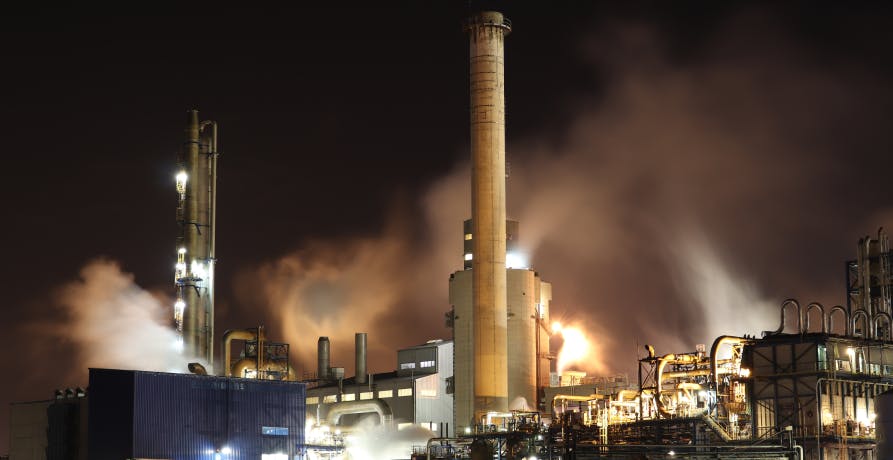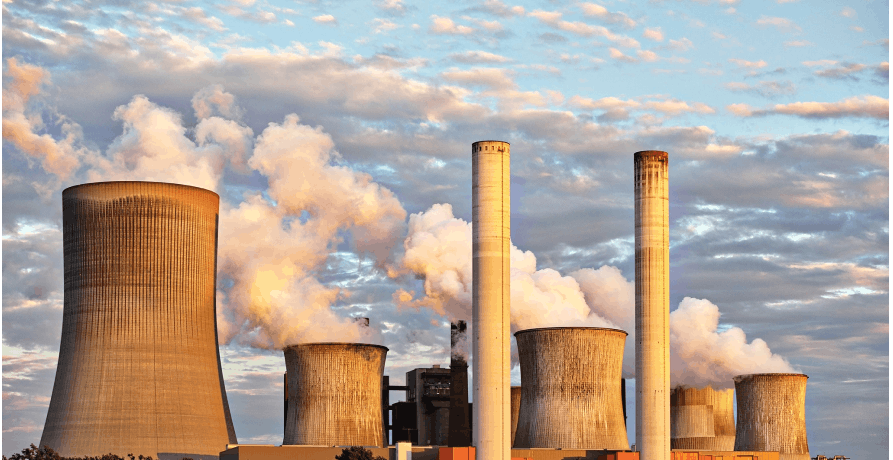
What are the 3 Pillars of Corporate Sustainability?
In this article, we'll explore what the 3 pillars of corporate responsibility are, why they're important, and how businesses can turn them into practical action.
ESG / CSR
Industries



Over the last three decades, many experts have predicted that carbon capture, utilisation, and storage (CCUS) technologies would be at the forefront of decarbonisation and a key tool in the fight against global climate change. However, CCUS methods have struggled to gain traction.
👉 What exactly is CCUS and how does the technology work? Why hasn’t it taken off as expected? And what place will it hold in the future of decarbonisation?
Despite the growth and investment in renewable energy sources in recent years, many believe that reducing carbon emissions isn’t enough and that we actively need to deploy technologies to remove the existing carbon from the environment. This is where CCUS comes in.
CCUS is a three-step process that encompasses: the capture of carbon dioxide produced through industrial activities; transportation, usually by ship or via a pipeline; and finally, either the storage or the repurposing of the captured carbon.
The combustion of fossil fuels such as coal and petroleum, alongside industrial processes such as steel and cement production, emit large volumes of carbon dioxide. Carbon capture technologies capture the carbon dioxide directly from the source of emission, preventing it from ever entering the environment in the first place.
Carbon capture is usually achieved in one of three ways:

Post-combustion carbon capture is where carbon dioxide is separated directly from the other waste gases produced from the burning of fossil fuels. It’s the most common carbon capture technique as the technology can be retrofitted to facilities that are already in operation.
Pre-combustion carbon capture technology works to remove the carbon dioxide before the complete burning of the fossil fuel. In this process the fossil fuels are only partially burned inside technology called a ‘gasifier’. The carbon can then be effectively removed. The process also results in the creation of hydrogen, which can then be separated and repurposed as fuel.
This method of carbon capture is commonly used in the production of fertiliser and chemical gas fuel. It’s also a cheaper technology than those involving post-combustion carbon capture. However, it cannot be fitted to older power plants and facilities, which limits its use.
Oxyfuel combustion is where fossil fuels are burned in pure oxygen, resulting in a waste of carbon dioxide and water. Of the three methods, it is the most effective carbon capture technique as it allows for the capture of nearly all carbon dioxide. However, the process is very energy-intensive.
Both CCS and CCU involve the process of capturing carbon dioxide. The difference between the two lies in what happens after the carbon dioxide has been captured.
CCS stands for carbon capture and storage. This is where the carbon dioxide is transported to a suitable storage facility where it can be kept permanently, preventing the carbon dioxide from ever being released into the atmosphere.
Carbon dioxide can be stored in one of two ways:
Geological storage of carbon dioxide is currently considered to be the most effective option and there are vast areas of the Gulf Coast and North Sea that contain suitable sites for carbon storage.
Storage locations are chosen on account of their geological features. Its necessary to have a layer of porous rock that the carbon dioxide can be injected into, with an impermeable layer of rock directly on top to prevent the escape of the carbon dioxide. Old oil and gas reservoirs make good storage options and are often selected.
Mineral storage involves injection of the carbon dioxide into naturally occurring rocks. The rocks are selected on account of their mineral content as certain minerals react with carbon dioxide, resulting in mineralisation which turns carbon dioxide into a solid compound, thereby preventing it from being released into the atmosphere.
CCU stands for carbon capture and utilisation. In this method, carbon dioxide is repurposed instead of stored. The carbon dioxide can be used to create an entirely different product such as construction materials, or it may be utilised in processes such as enhanced oil recovery. It can even be used to create synthetic fuel, displacing fossil fuels entirely.
Both CCS and CCU are tools in the arsenal against climate change and help to reduce carbon emissions. Carbon capture and utilisation is seen as a crucial part of long-term strategies to reach net zero emissions, while carbon capture and storage are needed to help battle carbon dioxide emissions in the short term.

Many wonder why carbon capture technology hasn’t experienced the growth and investment that was originally predicted. There are a number of reasons for this, including:
Despite global shifts towards renewable energy sources, the reality of the situation is that power plants fuelled by coal and gas continue to dominate the energy sector. Many believe that without the use of carbon capture, utilisation and storage technology, it will not be possible to achieve the Paris Agreement goal of keeping global average temperatures to 2 degrees above pre-industrial levels.
CCUS technology also offers a number of significant benefits, including:

Over recent years there have been several announcements promising the creation of new CCUS facilities. The majority of these are in the United States and Europe, however, projects have also been announced in China, the Middle East, and Australasia. As these new CCUS projects come to fruition we will see technological advancement and development in this sector, the creation of new infrastructure that will be able to support future CCUS projects, and the reduction of costs for the creation of CCUS technology. All of which is hugely beneficial to the future application of CCUS technology.
What is clear is that without the help of CCUS technology, it will be very difficult to achieve the targets of recent climate agreements.

If reading this article has inspired you to consider your own carbon emissions, why not get in touch with Greenly. We can help you to assess your company’s carbon footprint, and then give you the tools you need to cut down on emissions.
Click here to learn more about Greenly and how we can help you to reduce your carbon footprint.